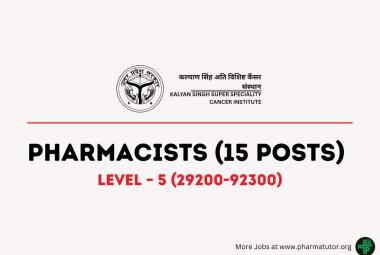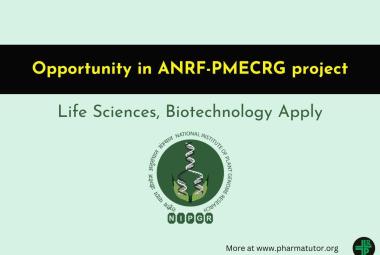{ DOWNLOAD AS PDF }
ABOUT AUTHORS
ABDUL KHALID QUADRI*, MD. BARKATH ALI SHAMS
Department of Pharmacy practice, Deccan School of Pharmacy, Hyderabad-500001, Telangana, India
*a.k.quadri4all@gmail.com
ABSTRACT
The Indian pharmaceutical industry is amongst the largest producer of pharmaceutical products in the world (by volume). The pharmaceutical sector is witnessing high growth rate over the past 8-10 years, it has been burdened with diminishing margins. The Indian pharmaceutical industry is facing pressures of increasing span control on account of changing regulations. GST which embodies the principle of one nation, one tax, one market is aimed at unifying the country’s INRs 124.9 trillion economy and 1.3 billion people into a common market. For corporates, the elimination of multiple taxes will improve the ease of doing business. And for consumers the biggest advantage would be in terms of reduction in overall tax burden on goods. In other words GST would make doing business in the country tax-neutral, irrespective of the choice of place of doing business, the important roll-out of GST is to provide a method for companies to simplify their operations, and achieve better efficiencies enabling them to serve customers better. It is also expected that supply chain and other operational planning opportunities and efficiencies may be available, depending on a company’s facts. However, in short–term/transitional phase, pharmaceutical industry, are likely to face a number of challenges, including possibly negative financial impacts, the need to assess existing supply chain structures, the need for reconfiguration of IT systems and more. The warehouse cost can be reduced and rationalized the supply cahin, it has a negative effect on ayurvedic products as its rate will increase from the present rate because of increase in tax slab. GST is expected to fetch a good revenue through increase in medical tourism, GST is surely going to benefit the pharmaceutical industries. It will create a level playing field for generic drug makers, boost medical tourism and simplify the tax structure.
[adsense:336x280:8701650588]
Reference Id: PHARMATUTOR-ART-2582
|
PharmaTutor (Print-ISSN: 2394 - 6679; e-ISSN: 2347 - 7881) Volume 6, Issue 5 Received On: 09/02/2018; Accepted On: 17/03/2018; Published On: 01/05/2018 How to cite this article: Quadri AK, Shams MBA; Visualizing challenges of GST on different corners of Pharmaceutical Industry; PharmaTutor; 2018; 6(5); 7-12; http://dx.doi.org/10.29161/PT.v6.i5.2018.7 |
INTRODUCTION:
GST stands for goods and service tax levied by the government in a move to replace all of the indirect taxes (Yogesh, 2006), In the current system in India, tax is levied at each stage separately, by the central and state, at varying rates, on the full value of goods, But under the goods and service is a single tax system that is set to be introduced, tax will be levied only on the value ADDED at each stage. It is a single tax (collected at multiple points) with a full set-off for taxes paid earlier in the value chain (Deepalakshmi K et al.,). The principle aims of GST is to eliminate the cascading effect i.e, tax on tax and it will lead to bringing about to cost competitiveness of the product and the service both at the national and international market. GST System is build on the integration of different taxes and is likely to give full credit for input taxes.GST is comprehensive model of levying and collection of indirect tax In India and it has replaced taxes levied both by the Central and State Governments (Yogesh, 2006)GST, Which Embodies the principle of “one nation, one tax, one market,” is aimed at unifying the country’s $2 trillion economy and 1.3 billion people in common market. Under GST, goods and services fall under five tax categories: 0%, 5%, 12%, 18% and 28% for corporate, the elimination of multiple taxes will improve the ease of doing business (Yogesh, 2006).
TYPES OF GST: There are four types of GST which are namely
a). SGST- state GST, collected by state government (Yogesh, 2006).
b). CGST- Central GST, collected by central government (Yogesh, 2006).
c). IGST- Integrated GST, Collected by central government (in case of inter-state transaction) (Yogesh, 2006).
d) UTGST- Union Territory GST, collected by union territory (Yogesh, 2006).
For transaction within a state, there will be two components of GST Central GST (CGST) and State GST (SGST) being levied on the value of goods and services. Both the centre and states will simultaneously levy GST across the value chain (Deepalakshmi K et al.,).
NECESSICITY OF GST:
The GST was established to subsume various indirect taxes levied at different levels, reducing the red tape, plugging the leakages and paving the way for transparent indirect tax regime (Deepalakshmi K et al.,). “Inflation will come down, tax avoidance will be difficult. India’s GDP will benefited and extra resources will be used for welfare of poor and weaker section (Yogesh, 2006). Apart from the filling of the loopholes of the current system, it is also aimed at boosting the Indian economy. This will be done by simplifying and unifying the indirect taxes for all the states throughout india (Yogesh, 2006). VAT rates and regulation differ from state to state. And it has been observed that states often resort to slashing these rates for attracting investors. This results in loss of revenue for both central as well as state government. The main reason behind introducing GST is to improve the economy of the nation. On the other hand, GST brigs in uniform tax laws across all the state spanning across diverse industries. Here, the taxes would be divided between the central and state government based on a predefined and preapproved formula. In addition, it would become much easier to offer service and good uniformly across the nation, since there won’t be any additional state-levied tax (Yogesh, 2006).
HOW GST IS DIFFERENT FROM VAT:
VAT is value added tax, which is considered the first step towards moving to a GST regime, VAT is charged on increase in value of an article at each stage of its production or distribution. This is exactly how GST will be levied on product. However, VAT applies to goods sold and not service, which comes under service tax. GST is applicable for the both goods and services, and at a uniform rate (Deepalakshmi K et al.,).
Also, a host of other indirect taxes are levied at various levels along with VAT. when GST is introduced, all of them will Go (Deepalakshmi K et al.,).
MAIN FEATURES OF GST :
• GST is one indirect tax for entire nation, which will make india “one unified common market” (Yogesh, 2006).
• Tax on supply on goods and services rather than manufacture or production of goods, provision of services or sale of goods (cbec.gov.in).
• Tax payer with an aggregate turnover in a financial year up (Rs.20 Lakhs & Rs.10 Lakhs for north eastern states and special category states) would be exempted from Tax (Yogesh, 2006).
• GST slabs are pegged at 5%, 12%, 18%, & 28% (mib.gov.in).
• Deemed registration in three working days (mib.gov.in).
• PAN based registration (mib.gov.in).
• Composition taxpayer to file quarterly returns (mib.gov.in).
• GSTN and GST Suvidha providers (GSPs) to provide technology based assistance (mib.gov.in).
• Tax can be deposited by internet banking, NEFT/RTGS, Debit/ Credits card and over the counter (mib.gov.in).
• Refund to be granted within 60 days (mib.gov.in).
• Provisional release of 90% refund to exported within 7 days (mib.gov.in).
• Interset payable if refund not sanctioned in time (mib.gov.in).
• All transaction and processes only through electronic mode - Non-intrusive administration (mib.gov.in).
• Option of voluntary registration (mib.gov.in).
IMPACT OF GST ON PHARMACEUTICAL MANUFACTURES :
Underneath this regime, interstate sale of goods attracts tax (central sales tax) which is not creditable to the buyer, where as movement of goods across warehouse of the constant company isn’t subject to tax. Hence, pharmaceutical corporations have acquired a decentralized supply chain model whereby multiple warehouses placed in several states in India have been operated to avoid tax outpouring from the direct interstate scale of goods. Since GST on of goods interstate scale of goods would be worthy underneath the model GST law, there exits chance for companies to revisit current supply chain structures, The quantity of warehouse being operated, etc. similarly there could exist opportunities to optimized sourcing strategies to attend significant supply chain cost savings (Bala and Mali 2017) .
Post-implementation of GST, these tax limitations/restrictions would stop to exist, thereby affording a lot of flexibility and enabling companies to shift their focus to non-sourcing consideration, which may be including purchase price, logistics cost, etc. As a result, through earlier planning, the transition to GST law may provide pharmaceutical corporation with a competitive advantage in terms of pricing and big margins (Bala and Mali 2017). In the make in India initiative, the pharmaceutical industry is a priority sector for increasing the domestic manufacturing footprint6.with the implementation of GST will benefit the country in the long run by developing domestic production capabilities (Manish et al., 2016).
Inverted duty structure currently prevailing in India is a key factor undermining the domestic manufacturing of API. key raw material imported for domestic production of API are taxed at a higher rate than the imported API making it uncompetitive against imported from china(Manish et al., 2016).
GST would do away with existing penalties on inter-state scales transaction and facilitate consolidation of vendors and suppliers, eliminating the need to have state wise warehouses to avoid CST and the paperwork. This will enable the companies to consolidate warehouses, better control and reduction in inventory i.e working capital deploying the business (biospectrumindia.com).
While the qualitative benefits arising out of GST are well established, there is definite impact to economics of companies as well. Logistics cost accounts for nearly 13-14% of our GDP. Of the total logistic cost transportation contributes ~35% warehousing & storage ~10%, inventory holding cost ~25% and other inefficiencies` make up the balance 30%. Implementation of GST and alignment of a firms supply chain to it will directly help in reducing cost on transportation, warehousing and inventory holding by 5-8% , 10-12% and upto 28% respectively for each of the cost heads, leading to an overall savings in the range of 10-12% of total logistics cost (biospectrumindia.com 2017).
It is expected that GST would have a constructive effect on the healthcare industries particular the pharma sector. It would help the industries by streamlining the taxation structure since eight different types of taxes are imposed on the pharmaceutical industry. An amalgamation of all the taxes in uniform tax will ease the way of doing business in the country, as well as minimizing the cascading effects of manifold taxes that is applied to one product. moreover, GST would as improve the operation efficacy by rationalising the supply chain that could alone add two percent to the country’s pharmaceutical industry.
IMPACT OF GST ON THE AYURVEDIC MEDICINES
With the introducing of GST Ayurvedic medicines will be taxed at 12% from the current tax rate of 7%, which has disappointed the ayurvedic medicines industry badly (gstcouncil.gov.in, Suresh 2016).
MEDICAL TOURISIM
With the implementation of GST, Medical Tourism is also projected to grow manifolds. Also, the formation of National Medical Tourism has initiated their policies for solving the issues which are faced by medial travellers. The board under the ministry of tourism would go a long way to solve the challenges in coordination across different ministries. With the roll out of GST, the cost of insurance, pharmaceuticals, and international travel together with quality health care is expected to reduce which would culminate into better prospects of medical tourism in the country (biospectrumindia.com).
FREE SUPPLY OF MEDICINES:
Pharmaceutical companies supply medicines free of charge as samples for doctors and as supplies to the world health organization (WHO) and government as part of health awareness programs, and patient assistance programs, etc. currently, free supplies are subject to any state VAT/CST (Bala and Mali 2017).
Under the proposed GST regime, the manufacturer made free of charge and other intra-company movements, as illustrate above, would be subject to tax. This is a representation of major change and could potentially have significant negative impacts on industry’ budgets, levels of available spending in connection with such programs and the overall cost supporting patient assist programs runs by companies (Bala and Mali 2017).
Therefore it is very important that the pharmaceutical industry actively involve the committee and the central and state government in support of exempting tax from these types of transaction from GST (i.e., zero value transactions) and not requiring any turnaround of input tax credits (Bala and Mali 2017).
THE SUPPLY CHAIN CHALLENGES
• The supply chain challenges for companies lies in redesigning their networks ends to end along with optimizing their sale and operation planning (Manish et al., 2016).
• From the perspective of legal and tax compliance, companies will also have to redesign their business processes to adhere to the rules set by GST (Manish et al., 2016).
• Companies will also have to engage with their supply chain stakeholders such as suppliers and logistics service providers in order create a common platform for working together post GST implementation (Manish et al., 2016).
• The first stage would be to design and implement the system for legal and tax compliance(Manish et al., 2016).
• Next step is assessing the existing supply chain to identify opportunities for improvement such as sales and operation planning and network realignment (Manish et al., 2016).
• The last step would be the change management process for aligning people and business processes to the modified structure and generating gains from it (Manish et al., 2016).
Since GST on interstate sale of goods would be creditable under the model GST law, there exist an opportunity for companies to revisit current supply chain structures, the number of warehouses being operated, etc. similarly, there may exist opportunities to optimize sourcing strategies to achieve significant supply chain cost savings. For example, companies have historical designed their sourcing strategies with the primary goal of minimizing indirect taxes incurred the under the current regime (i.e., whether to procure from within the state or outside the state). Post- implementation, these tax limitations/restrictions would cease to exist., thereby affording more flexibility and enabling companies to shift their focus to non-tax sourcing considerations, including purchase price logistics cost, etc (Suresh 2016).
As a result, through proactive planning, the transition to GST could private pharmaceutical companies with a competitive advantage in term of pricing of the goods (Suresh 2016).
NOW YOU CAN ALSO PUBLISH YOUR ARTICLE ONLINE.
SUBMIT YOUR ARTICLE/PROJECT AT editor-in-chief@pharmatutor.org
Subscribe to Pharmatutor Alerts by Email
FIND OUT MORE ARTICLES AT OUR DATABASE
GST ON MEDICAL SHOPS
These retailers does not have any excise sale invoice or VAT invoice with them but tax such as excise and VAT are already paid. Now in the GST regime, retailers are also entrusted to collected tax from ultimate customers and take credit of the stock in hand and they have on some method prescribed (india-gst.com).
Table no:1 PERCENTAGE OF GST ON DIFFERENT PHARMA PRODUCTS
(gstcouncil.gov.in, india-gst.com, novalife.in)
|
Percentage |
Pharmaceutical products |
|---|---|
|
NIL |
1.Human blood and its components, 2. All types of contraceptives. |
|
5% |
1.Animals or Human blood Vaccines, 2.diagnostic kits for detection of all types of hepatitis |
|
12% |
1.Desferrioxamine injection or deferiprone, 2.cyclosporine, 3.Medicaments (including veterinary medication) used in bio-chemic system and not a bearing a brand name, 3.Oral re-hydration salts, 4.drugs or medicines including their salts and esters and diagnostic test kits, specified in List 3: (1.Allopurinol 2.Amrinone 3.Amifostine 4.Baclofen 5.cefoperazone 6.Desferrioxamine Etc.) or List 4 (1.Asparaginase , 2.Anti-Haeomophilic factor concentrate (VII & IX), 3. Blood group sera, 4.Calcium folinate , 5.Cyanamide) appended to the notification no.12/2012, Customs, dated the 17th march, 2012. 5.Formulations manufactured from the bulk drugs specified in list 1(1.Streptomycin, 2.Isoniazid, 3.Thiacetazone, 4.Ethambutol, 5.Sodium PAS) of notification No.12/2012- central excise, dated the 17th march, 2012. |
|
18% |
All goods not specified elsewhere 1. Glands and other organ for organ-therpeutic uses, dried, whether or not powdered, extracts of glands or other organ or of their secretions for organo-therapeutic uses; heparin and its salts; other human or animal substances prepared for therapeutic or prophylactic uses, not elsewhere specified or included |
|
28% |
Nicotine polacrilex gum |
WHAT PHARMA INDUSTRIES WILL GET
1. Less tax compliance (Yogesh, 2006).
2. Removes cascading effects of taxes (Yogesh, 2006).
3. Manufacturing costs will be reduced, Hence prices of consumers goods likely to come down (Yogesh, 2006).
4. Implementation of GST will have significant impact and change the manner in which business is carried out in comparison with the existing ways (Manish and Siddharth 2014).
5. The application of single tax rate across all goods and service will result in redistribution of taxes across all categories. This will lead to a reduction in taxes on manufactured goods and thereby impacting the pricing of final produc (Manish and Siddharth 2014).
6. We recommended the pharmaceutical companies begin now the process of assessing the potential impact to their business and developing a transition plan to achieve four key objectives:
• Engage the government on issues and requirements that are important to the business in an efforts to influence the GST rule-making process (Suresh 2016).
• Avoid any business desruption on the cut-over date (Suresh 2016).
• Achieve 100% compliance with all legal and procedural requirements under the GST (Suresh 2016).
• Identify and implement any available atx and business/operational planning or cost management opportunities, recognizing that implantation of such opportunities may require long lead times (Suresh 2016).
The research based pharmaceutical industries was hopeful that there would be a reduction in the tax incidence on pharmaceutical product (biospectrumindia.com).
CONCLUSION:
On the whole GST is expected benefit the pharma and healthcare industries. It will create a level playing field for genetic drug makers, boost medical tourism and simplify the tax structure. The pharma sector is hoping for a respite as it will make affordable healthcare easier to access by all. Under GST it is expected to Achieve 100% compliance with all legal and regulatory requirement GST will beef up the supply chain across the country more efficiently. Inter-state transaction between two dealers will become tax neutral, replacing traditional C&F DISTRIBUTION MODEL, Most of the companies have to restructure their entire distribution chain thus, focusing more on religion hub rather than multiple state.The biggest advantage to the industry would be that of reduction in transaction cost, with an immediate impact coming from the discontinuance of CST. The multiple stage taxation along with the inability to take full benefit of the CENVAT credit/ refund has been an issue for industry. With central GST expected to be a single rate for goods and services, going forward credit accumulation may be an area of concern.
REFERENCES:
a) Yogesh, KA. Goods and Services Tax and Its Impact on Indian Economy. IOSR-JBM.. 2017;19(10):26-30.
b) Bala N, Mali N. Goods and services Tax (GST) in Indian pharmaceutical and its impact on industry. Pharma Tutor. 2017;5(8):7-11.
c) Manish P, et.al. GST impact on business strategy of pharmaceutical companies. Biospectrum. 2016:55-57.
d) Suresh Nair. India’s looming Goods and Services Tax (GST): considerations for the pharmaceutical industry. EY publication india. 2016:1-6.
e) Manish P, Siddharth P. GST : A sweet pill for Indian Pharma. Tata Strategic Management Group. 2014:1-4.
f) Deepalakshmi K, et al. The Gst of it. The Hindu. [http://www.thehindu.co/].
g) GST to have constructive effect on the Pharma and Healthcare sectors. Biospectrum. [https://www.biospectrumindia.com/]. 2017:1-3.
h) GST rate schedule for goods, As per discussions in the GST Council Meeting held on 18th May, 2017. [www.gstcouncil.gov.in/gst-rates].
i) GST rates on pharmaceuticals products. Nova life health care. [http://www.novalife.in]. 2017:1-5.
j) Datey VS. GST Ready Reckoner, Taxmann , 4th Edition 2017.
k) Abhishek AR, Professional‟s Guide to GST - From Ideation to Reality, Lexis Nexis.
l) Nitya Tax Associates ,Basics of GST, Taxmann , 1st Edition August 2016.
m) Girish, G. Basic Concepts and Features of Good and Service Tax In India, International Journal of scientific research and management (IJSRM). 2014;2(2):542-54.
n) http://www.cbec.gov.in/htdocs-cbec/gst
o) http://www.mib.gov.in/
p) www.india-gst.com.
NOW YOU CAN ALSO PUBLISH YOUR ARTICLE ONLINE.
SUBMIT YOUR ARTICLE/PROJECT AT editor-in-chief@pharmatutor.org
Subscribe to Pharmatutor Alerts by Email
FIND OUT MORE ARTICLES AT OUR DATABASE









